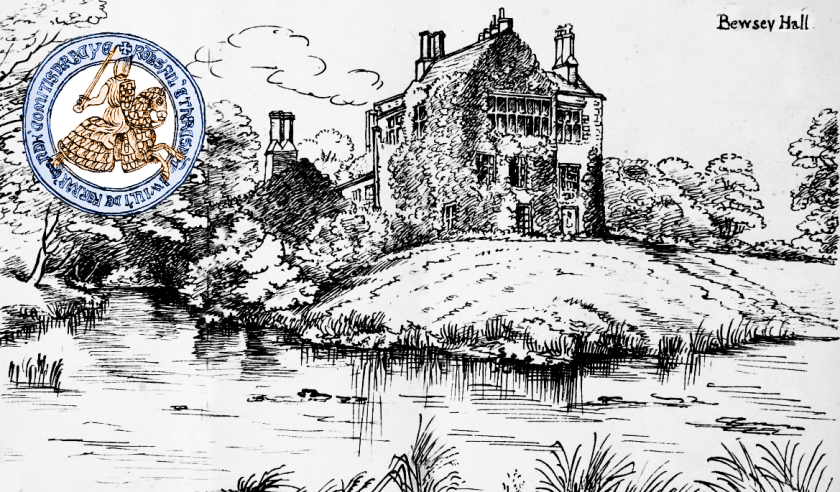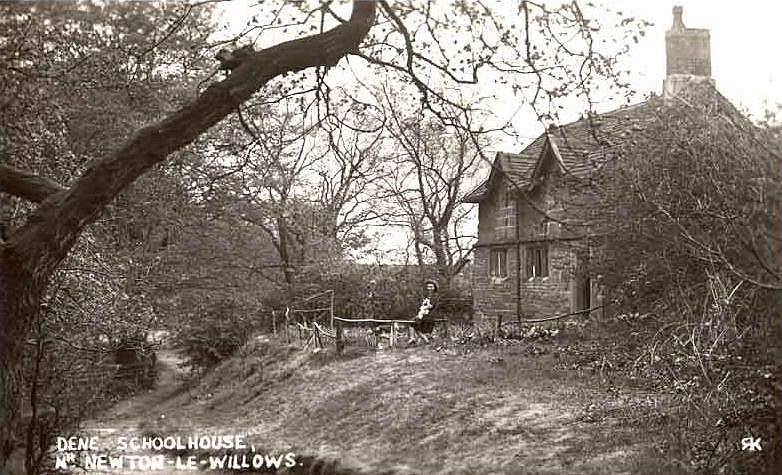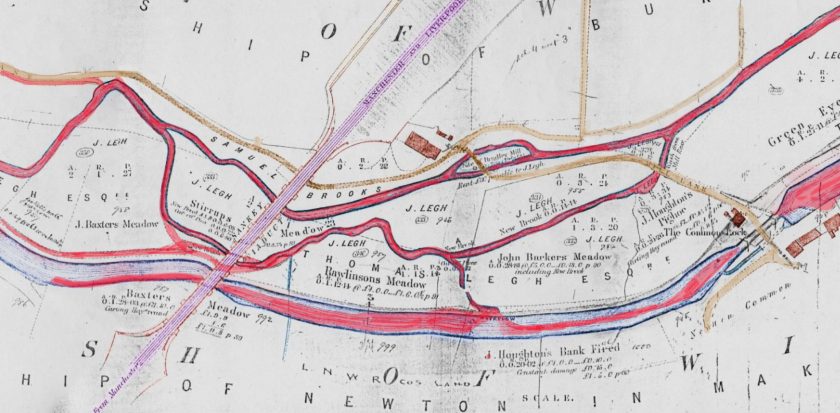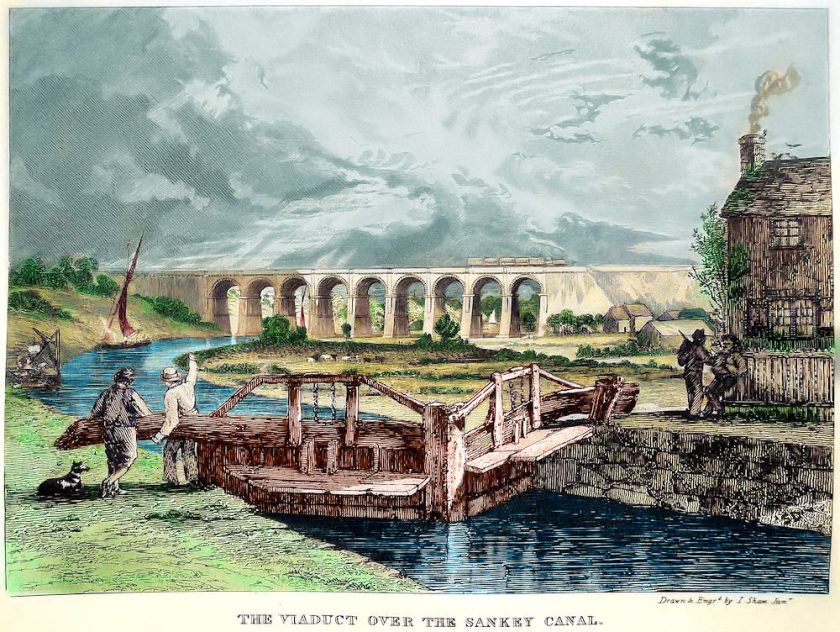The following chronological list is derived from the 1873 book titled “Annals of the Lords of Warrington,” a historical account that delves into the centuries following the Norman Conquest of England. This compilation provides a detailed exploration of significant events, land transactions, and the involvement of notable families in the regions surrounding Warrington, including Newton-in-Makerfield, Burtonwood, Haydock, Parr, Winwick, Bradley Park, Bewsey, Culcheth, Great Sankey, and Lower Sankey. These records shed light on the development of these localities from the 11th century onwards, highlighting their strategic importance, social structures, and the intertwining of feudal, ecclesiastical, and economic elements that shaped the history of the Palatine Counties of Lancaster and Chester.
These records shed light on the development of these localities from the late 11th century onwards, offering insights into the feudal landscape, land management practices, and the social dynamics that shaped the region. The information presented here is meticulously organized in chronological order, capturing the intertwined histories of these areas through significant dates and events. Each entry begins with the year, followed by the place or surname associated with the event, and a description of the historical context, actions, and individuals involved. This compilation not only serves as a historical record but also as a narrative that connects the past to the present, reflecting the enduring legacy of the families and places that have shaped the history of Warrington and its surroundings.
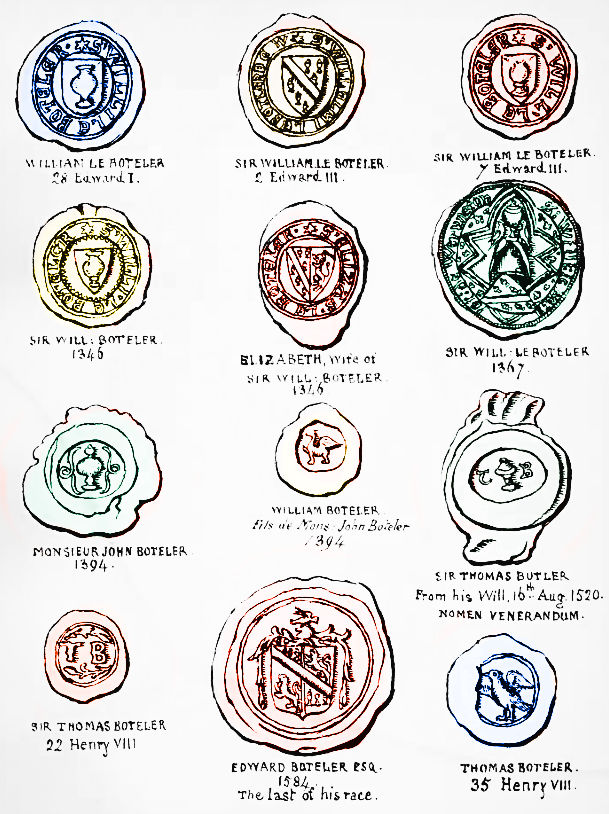
This list is organized chronologically, offering insights into the evolving landscape and the roles played by prominent families and individuals. After the chronological details, key individuals mentioned throughout these records are summarized to provide further context and understanding of their influence on the regions’ history.
Comprehensive Chronological List of Historical References
1252: Newton: William de Newton fitz Richard de Bispham granted a license to the abbot of Dieu la Cresse to wash his sheep in Little Bispham mere, highlighting the involvement of local landowners in managing agricultural and communal resources.
1256: Bewsey: The first appearance of the name “Bewsey” is recorded, with William Pincerna referred to as “Willielmus Pincerna de Bewsey,” marking the establishment of the Bewsey estate connected to the broader area including Sankey.
1260: Burtonwood: William le Boteler obtained extensive rights over Burtonwood from Earl Ferrars, solidifying the Boteler family’s influence and initiating structured land management.
1266: Culcheth: William le Boteler, alongside Robert le Banastre and others, witnessed the confirmation of charters to the burgesses of Liverpool, indicating the involvement of prominent families from Culcheth.
1272: Bold: A legal agreement dated May 20 between William de Bold and William le Boteler solidified William de Bold’s rights to his lands in Bold, underlining the longstanding tenure of the Bold family.
1278: Winwick: Winwick is mentioned in connection with significant ancient or medieval structures, possibly including Norman constructions, suggesting its importance in local governance and defense.
1280: Sankey: The first recorded mention of Sankey, noting the natural resources of the area, particularly focusing on the water supply provided by the Sankey Brook for local agricultural uses.
1300: Culcheth: William le Boteler granted various rights and relieved obligations to Gilbert de Culcheth, his heirs, and tenants, highlighting administrative governance over Culcheth lands.
1301: Great Sankey: William le Boteler, “dominus de Weryngton,” granted land in Great Sankey to William fitz Henry de Hodleston, showing the ongoing importance of land distribution in the area.
1307: Bold: William le Boteler re-leased lands to various individuals, including lands in Bold, highlighting the Boteler family’s administrative control over the area.
1310: Sankey: A dispute concerning the rights of water usage from Sankey Brook involved William le Boteler, setting a precedent for regional water rights.
1323: Burtonwood: On July 24, William le Boteler leased ten acres of land in Burtonwood, marking the beginning of more expansive land use and management.
1324: Burtonwood:
- On August 18, William le Boteler leased half an acre of land, continuing piecemeal land distribution.
- On November 10, an additional eight and a half acres and half a rood of land were leased, reflecting growing interest in agricultural and residential development.
1328: Burtonwood and Sankey: A year marked by multiple transactions:
- On March 10, Henry, son of Norman le Boteler, confirmed land rights in Little Sankey.
- On June 10, land was leased to Robert fitz Grangos and his wife Cecilia, demonstrating the Boteler family’s strategy to fortify feudal ties.
- A dispute over common rights in Burtonwood and Sankey was settled, highlighting the complexities of communal land use.
1331: Burtonwood: On December 6, William le Boteler granted rights over three acres of wood and waste in Burtonwood to Robert fitz Adam Grangos and his son, continuing the family’s strategic land management efforts.
1334: Burtonwood: On December 1, lands in Burtonwood were included in the dower of Sibilla, secured by William le Boteler, indicating the use of land as a strategic marital asset.
1335: Winwick: William le Boteler issued a military summons involving John de Chisenhale, rector of Winwick, highlighting the overlap between ecclesiastical and feudal responsibilities.
1336: Winwick: A significant boundary agreement involving Winwick was made, showcasing the region’s importance in land management and feudal jurisdiction.
1340: Burtonwood and Haydock: On April 19, William le Boteler made significant leases for lands in Burtonwood to Henry de Haydock and his son, illustrating the strengthening of local feudal bonds.
1345: Sankey: A legal agreement detailed the maintenance responsibilities of the Sankey Bridge, highlighting the infrastructural importance of the brook in connecting trade routes.
1346: Bold: The inquisition post mortem for Henry, Earl of Lancaster, noted that William le Boteler held the manor of Bold, indicating its strategic importance within regional power structures.
1346: Burtonwood: On September 30, William and Elizabeth le Boteler granted lands in Burtonwood to Henry de Haydock and his son William, likely part of a larger feudal arrangement.
1349: Burtonwood: On October 12, Alan de Eccleston and Alice his wife were granted all the lands they held of William le Boteler in Burtonwood, possibly settling previous obligations.
1351: Burtonwood: William le Boteler participated in a commission of assize as a juror, reflecting his continued involvement in regional governance.
1356: Burtonwood: The great battle of Poictiers indirectly influenced all feudal holdings, including Burtonwood, due to the significant military engagement and social upheaval of the era.
1361: Winwick: Financial contributions towards building Winwick Church were documented, highlighting the community’s investment in religious and structural development.
1362: Winwick: John Donne, rector of Winwick, was granted permission to study away from his parish, reflecting the church’s support for educational pursuits.
1366: Winwick: John Donne leased his clerical position to focus on his studies, a reflection of clerical absenteeism during the time.
1367: Sankey: A festive gathering by the Sankey Brook was recorded, indicating its role as a communal space for local festivities.
1373: Culcheth: William le Boteler made agreements concerning the management of Culcheth lands, emphasizing the operational autonomy given to local lords.
1380: Ashton: Sir John Ashton of Ashton-under-Lyne was mentioned as being made seneschal of Bayeux and captain bailiff of Constantine in France, highlighting his significant military roles.
1402: Sankey: A grant of fishing rights along Sankey Brook to Thomas Danyers by John le Boteler, reflecting the ongoing economic utility of the brook.
1404: Ashton: Sir John Ashton’s role expanded as a trustee in a marriage settlement made by Sir William Boteler, linking him to significant legal agreements.
1435: Sankey: The will of Robert de Sankey mentioned the brook explicitly, leaving lands adjacent to it to his heirs, highlighting its significance in local landholdings.
Key Individuals and Relationships
- William le Boteler: Central to many transactions and developments, especially in Burtonwood, Sankey, and Bold, shaping land management and local governance.
- William de Bold: His involvement in the 1272 agreement underlines his family’s longstanding rights over lands in Bold.
- John de Chisenhale and John Donne: Notable ecclesiastical figures in Winwick, involved in regional governance and balancing clerical duties with educational pursuits.
- Henry de Haydock: Involved in significant land transactions in Burtonwood and Sankey, indicating ongoing feudal relationships and economic activities.
- Sir John Ashton: His military and administrative roles in Ashton demonstrate his family’s prominence in regional politics.
This comprehensive list is drawn from the 1873 book “Annals of the Lords of Warrington,” which details the history of the Warrington area and its surrounding regions, such as Newton-in-Makerfield, Burtonwood, Haydock, Parr, Winwick, Bradley Park, Bewsey, Culcheth, and Great and Lower Sankey.
The records span centuries following the Norman Conquest of England, highlighting significant events, land transactions, and the roles of prominent families in shaping the local landscape. The entries are organized by year, beginning with 1252, and provide insights into the socio-political and economic developments of these areas. Through this compilation, the rich history of these communities is preserved, showcasing their importance in the broader context of English medieval history.
